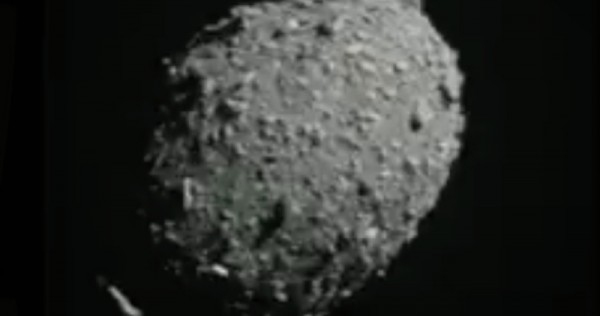That blurry image you see above is the asteroid Dimorphos. And just hours ago, a Nasa spacecraft crashed into it as part of a test that Nasa calls Double Asteroid Redirection Test (Dart).
The goal is simple. To see how much of an impact the crash would change the movement of Dimorphos. This crash is the first part of an experiment to see if NASA might one day be able to save humanity from an asteroid strike.
Lori Glaze, Director of Nasa’s Planetary Science Division, said:
We’re embarking on a new era of humankind, an era in which we potentially have the capability to protect ourselves from something like a dangerous hazardous asteroid impact. What an amazing thing. We’ve never had that capability before.
To be clear, Dimorphos isn’t a threat to Earth. In fact, it’s not even very big (roughly the size of a football stadium). An hour before impact, images from the Dart spacecraft didn’t even show Dimorphos.
But as the Dart spacecraft sped towards it at speeds of 14,000mph (~22,500km/h) boulders from Dimorphos soon filled the screen and went bright red, signalling impact.
IMPACT SUCCESS! Watch from #DARTMIssion’s DRACO Camera, as the vending machine-sized spacecraft successfully collides with asteroid Dimorphos, which is the size of a football stadium and poses no threat to Earth. pic.twitter.com/7bXipPkjWD
— NASA (@NASA) September 26, 2022
Now, telescopes around the world and in space will be watching eagerly to see how much of an impact the Dart spacecraft would have on the movement of Dimorphos.
However, it will probably take months before scientists will be able to say with certainty how much of an impact the crash had.
This article was first published in Asia One . All contents and images are copyright to their respective owners and sources.











